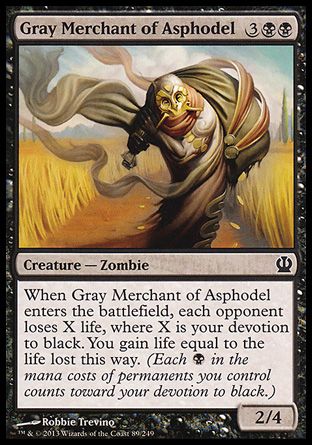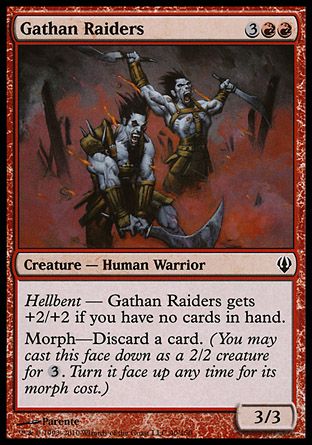PART 2: MECHANICS OF MAGIC
I’ve been thinking about how the mechanics for this will work and I’m more and more convinced that the best way to achieve what I want is to break the mold of Magic: The Gathering sets and to generate game mechanics for each of the different types of magic. I don’t know how yet I will be engineering this, but suffice it to say, it should be an interesting undertaking. We’ll just brainstorm some ideas and themes for how mechanics will work and then we’ll see if we can’t make something from nothing.
Arcane Magic
The first one I want to look at is Arcane magic, which will be, arguably, the strongest type of magic in the realms of Khorrim—at least to start. The major empire uses Arcane magic regularly, as a science and as an art. I’m becoming more attached to the idea of the empire using Arcane shards as a way of generating or enhancing their mana output; maybe as a type of unsustainable fuel (as discussed briefly in the brainstorm, I think I’d like arcane shards to be a part of the reason why there’s a crusade into the Far Realms). In terms of game balance, arcane magic simply can’t be stronger than the other types of magic, or else everyone would only ever choose arcane magic. But the appearance of it being stronger is something that I can definitely look into. Perhaps by creating a mechanic that is weaker, I can give it some stronger abilities, allowing it to look stronger than it actually is. But that’s all gypsy mumbo jumbo.
Arcane magic should be something that’s variable in strength. Maybe Arcane magic is severely limited by the type of Arcane shards that are available to the caster. The weaker the shards, the weaker the spells and the stronger the shards, the stronger the spells. In game mechanics, this could potentially be represented by Arcane Magic being determinant upon the number of land types among all known land types a player uses to pay for the spell, expressed as:
Arcane magic — For each different colour of mana used to cast this spell [effect].
Players who were playing with Arcane decks would then be pointed towards playing towards a five-colour deck in the game, which makes the deck substantially weaker (in my experience playing three colours or fewer in a deck is the most efficient strategy), but the abilities can be a little stronger to give a reason to players looking to play as an Arcane caster.
I like that. So let’s move on to the next type of magic: Elemental magic.
Elemental Magic
Elemental Magic should be fierce and powerful; an unrestrained, nigh uncontrollable type of power. Casters who use it should be able to use any of the four elements (Air [White], Water [Blue], Earth [Green], and Fire [Red], with black being omitted). But it should come with a heavy price to the user. In game lore, I want Elemental Magic to be one of the old types of magic, more ancient than the trees and the rivers. Elemental Magic comes from the Elemental Chaos, which is where all of creation originates from (out of the chaos came the Gods who created the world, or something to that effect). Yet of all the creatures in the world, it is the Elves who still use it. The other races have discovered Divine or Arcane magic, or Psionics, but the elves cling to the old ways of the past. This makes them tribal and shamanistic. Elemental magic should be damaging to all participants whenever possible.
Elemental Magic should also be about big creatures. The other types of magic should have creatures, and some of them be bruisers—but Elementalists should have access to the most of these big creatures, capable of killing a player in only a few turns.
Players who play with a deck that has Elemental magic in it should have the strategy of dealing damage while building up an army of creatures for the final attack. Trample will be an important keyword in elemental decks, and so will creatures and artifacts that are able to produce mana by being tapped. But what do we do about new mechanics? I’m thinking I might not need a new mechanic for this. The Devotion mechanic, introduced in the
Theros block might work perfectly for a mechanic. The devotion mechanic counts each mana symbol among permanents you control and then has an effect which is determinant upon that total number.
An example of a Devotion ability.
In terms of lore, I think this matches up nicely with the insinuation that elemental magic is tribal. Mana casters want to have as much devotion to their chosen colour as possible. In game mechanics, I think it works as a good foil to the Arcane ability discussed previously as well. Where the power of Arcane will come from amassing as many colours as possible, the Elementalist will want to be frugal in the colours he or she chooses for a deck.
Up next we’ll take a look at Divine Magic.
Divine Magic
This is the type of magic that comes from the worship of the new Gods. It should be separate from the worship of the Old Gods, who are primordial beings of immense power. The new Gods are the ones who deposed the Old Gods and replaced them. They grant wishes, miracles and other divine interventions for the races of Khorrim but don’t walk the world or otherwise interfere in mortal affairs. The Gods also allow for clerics and other magic users to cast spells by channeling their divine essence through them. Yet despite the power of the Gods their favour with the people is waning. The people now prefer the simplicity and ease of Arcane power over the rituals and prayers to the Divine.
Mechanically I would like to represent the flavour ability of channeling through divine beings. Luckily there already exists a mechanic called Channel in the Magic: the Gathering universe. The mechanic works essentially by being able to discard a creature card for a temporary ability that would be similar to what the creature’s ability would be if it were put into play.
It could be easy to reflavour the ability as only working on creatures of the cleric type, but I’m not yet sure if it is the ability I’m going to use for Divine magic going forward. I might want to retool it to make it a little bit more suited for Khorrim, and give it a renaming. For now though we’ll leave it as is.
Shadow Magic
The next type of magic is Shadow magic. In the flavour Shadow magic is forbidden and shunned throughout the major empire, even more so than the Elemental magic. Whereas elemental magic is seen as dangerous and unwieldy, Shadow magic is seen as perverse and unnatural. Coming from the Shadowfell Shadow magic is more analogous to demonic possession than actual magic. Beings of immense power from the Shadow realm are sometimes able to pass into the mortal body of a creature in Khorrim, when circumstances are perfect. Sometimes however these possessions go terribly awry and the result is a Horror, a creature that transforms into a horrifying being of great power. Transformed by the dark and secret magic this creature becomes a slave to the demonic force that created it.
But we’ll cover horrors later on when we get to creatures, for now we should stick to the matter at hand: how does Shadow magic differ itself from the other types of magic, in terms of mechanics? Well I want it to tie into the element of generating Horrors, so I’m thinking maybe it will show up on Enchant creature cards only (or, if not exclusively, mostly). Shadow magic will be all about creatures transforming, so maybe we could use it on creatures too. Similar to the way that they were used in the previous
Innistrad block for transforming creatures into Werewolves and Vampires (or perhaps even bring the Morph mechanic back into action) creatures cast with Shadow magic will be transformed into hideous Horrors.
Left to right: A creature with morph, and a creature with Transform (the two cards on the right are the front and back of one card, respectively)
I think the name has inspired an idea for me though. I’ll call the mechanic that distinguishes shadow magic
Shadowfall. Yes, I like that. Shadowfall will work by checking the number of permanents in a graveyard that have
Shadowfall, and then amplifying the effect of the ability based on that number (excluding the played card). So it will be expressed as:
- Shadowfall — For each other permanent in your graveyard with Shadowfall [effect].
I have a feeling, however, that this will be a slightly overpowered ability if it counts all cards in the graveyard with this ability. It will, almost certainly need to be toned down to be more playable, but for now I like that ability.
Fey Magic
Finally we come to the last of the true magics: Fey magic. Fey magic is what is known inherently by the Fey creatures of the world. Unlike many of the other races of Khorrim who have had to learn and harness their magical aptitudes, Fey creatures are inherently magical. Millennia ago there was a bridge between the Feywild and Khorrim, but it was destroyed when the seals were created. Those creatures who were on Khorrim’s side of the veil became the Fey races, and they have since carved out a home for themselves in this world, unable to ever return home. Fey magic is special in its inherency. It can never be learned. Only creatures whose spirits are linked to the Feywild can ever wield it.
For game mechanics, I’m thinking I would like it to be an ability for creatures only to represent its being used by only Fey creatures. I would like it to be the least powerful of all the magics in the first set of cards (“Double”) to represent the way that the link between the Feywild and the Fey creatures is beginning to diminish after so many millennia of separation. There should be three tenets of Fey magic: protection, vitality and mana. A Fey ability should either generate mana, protect the player or creatures by making them temporarily stronger (buffs), or grant life to the controlling player. I also like the idea of Fey magic being something of a foil to Shadow magic, in that Fey heals and restores while Shadow weakens and destroys.
I’m thinking that the Fey mechanic will be:
- Fey Magic — For each other permanent you control with Fey magic on the battlefield [effect].
I like that this kind of runs contrary to the
Shadowfall mechanic discussed earlier, but I’m not sure if it quite fits in with the lore behind the game. The lore can always be adapted though to make it more inclusive. Maybe the Fey communities thrive on helping each other out.
For now, though, that’s how the magic mechanics will work. For those of you keeping score at home, you’ll notice I have yet to mention Psionics, and that is, I assure you, intentional. I don’t yet know how I want to present that particular off-shoot of magic with mechanics so I’m going to leave it alone for now and maybe come back to it later, before we start designing all of the cards. What I can say about it now though is that I want it to be on artifact creatures only, and I want it to represent something of a hive mind. But it’s still kicking around in my head, so I’ll leave it for now.
As always, if you have any questions, comments, or criticisms please feel free to share them.

 Your support makes Blue Moon possible (Patreon)
Your support makes Blue Moon possible (Patreon)



